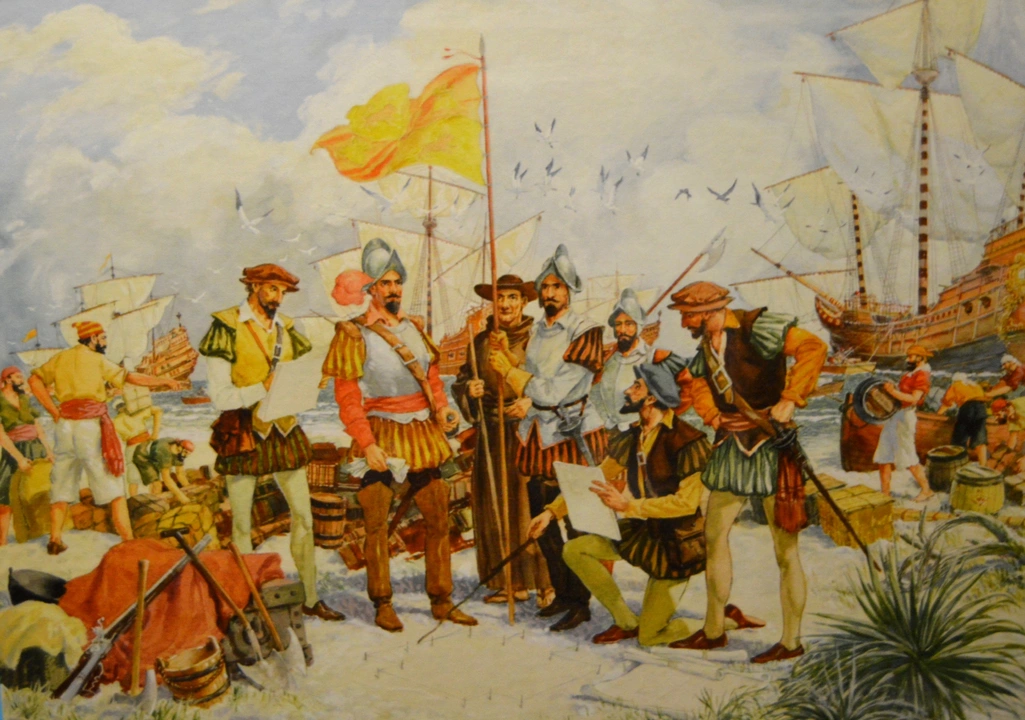Discovering the Purpose of Spanish Missions in California
When we think of California, we often envision a land of sunshine, beaches, and Hollywood dreams. However, long before the state became a part of the United States, the Spanish had established a series of missions in this region. But why did they do this? In this article, we'll delve into the history of these missions and explore the reasons behind their establishment. So, let's dive in and uncover the story of Spanish missions in California.
The Spanish Empire's Expansion and Need for Control
During the 18th century, the Spanish Empire was at its peak, stretching across vast territories in America, Europe, and Asia. As a global power, Spain felt the need to maintain control over its territories and protect them from foreign invasion. California was seen as a strategic location due to its proximity to the Pacific Ocean and potential to serve as a gateway to Asia. As a result, the Spanish began building missions in California to assert their presence and secure their hold on this valuable territory.
Moreover, the Spanish were in direct competition with other European powers, such as the British and Russians, who were also establishing colonies in North America. The Spanish wanted to ensure that they had a strong foothold in the region before any other nation could lay claim to it. These missions were not only religious centers but also acted as fortresses to guard against potential threats.
Spreading Christianity among the Indigenous Population
One of the primary objectives of the Spanish missions was to spread Christianity among the indigenous people of California. The Spanish believed that converting the native population to their faith would not only save their souls but also help them assimilate into Spanish culture, making it easier for Spain to govern the territory effectively. The missions were designed to be self-sufficient communities where priests could teach the local population about Christianity, European customs, and agriculture.
The missionaries aimed to create a new population of Christian converts who would be loyal to the Spanish Crown and serve as a buffer against potential invasions by other European powers. However, this process of forced conversion and cultural assimilation came at a high cost for the indigenous people, as many were subjected to forced labor, disease, and the loss of their traditional way of life.
Economic and Agricultural Development
Another reason for the establishment of Spanish missions in California was to develop the region's economy and agricultural resources. The Spanish saw the potential for California to become a prosperous and self-sustaining territory, capable of providing food and resources for its inhabitants and the Spanish Empire at large. The missions played a crucial role in achieving this goal, as they served as centers of agricultural production and trade.
At the missions, the indigenous people were taught European agricultural techniques and provided with tools to cultivate the land. As a result, the missions became key hubs for the production of crops such as wheat, grapes, and olives, as well as livestock like cattle and sheep. This economic and agricultural development helped to sustain the Spanish presence in the region and contributed to the growth of the California economy.
Creating a Network of Communication and Transportation
The Spanish missions in California also served as a vital network of communication and transportation between the various settlements and military outposts in the region. These missions were strategically placed along the California coast, allowing for easy communication and transportation between them. This network, known as El Camino Real or "The Royal Road," linked the missions and facilitated the movement of people, goods, and information throughout the region.
This infrastructure was essential for maintaining Spanish control in California, as it allowed for the rapid deployment of troops and resources in response to potential threats or emergencies. The missions also served as waystations for travelers, providing them with food, shelter, and supplies during their journey along El Camino Real.
Preserving Spanish Culture and Heritage in California
Finally, the Spanish missions in California played a crucial role in preserving and promoting Spanish culture and heritage in the region. The missions were designed to be not only religious centers but also hubs of Spanish language, art, architecture, and education. By teaching the indigenous population Spanish customs and traditions, the missionaries hoped to create a new generation of Californians who would be loyal to the Spanish Crown and help maintain the Spanish presence in the region.
Today, the remaining Spanish missions in California stand as testament to this early period of the state's history and the influence of Spanish culture on the region. These missions are important historical landmarks that remind us of the complex and often contentious relationship between the Spanish, the indigenous people, and the land that would eventually become California.




